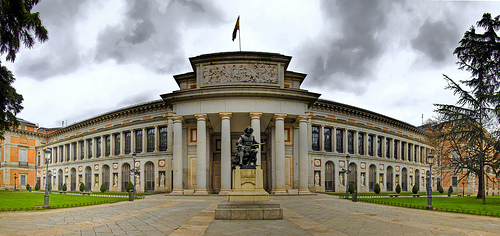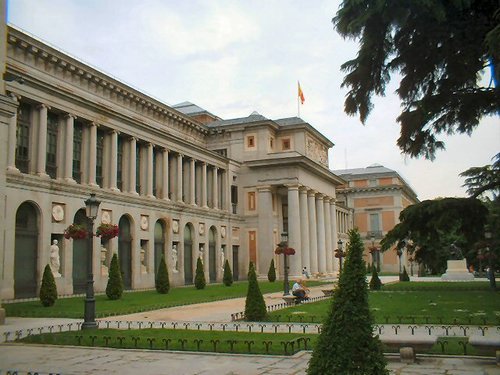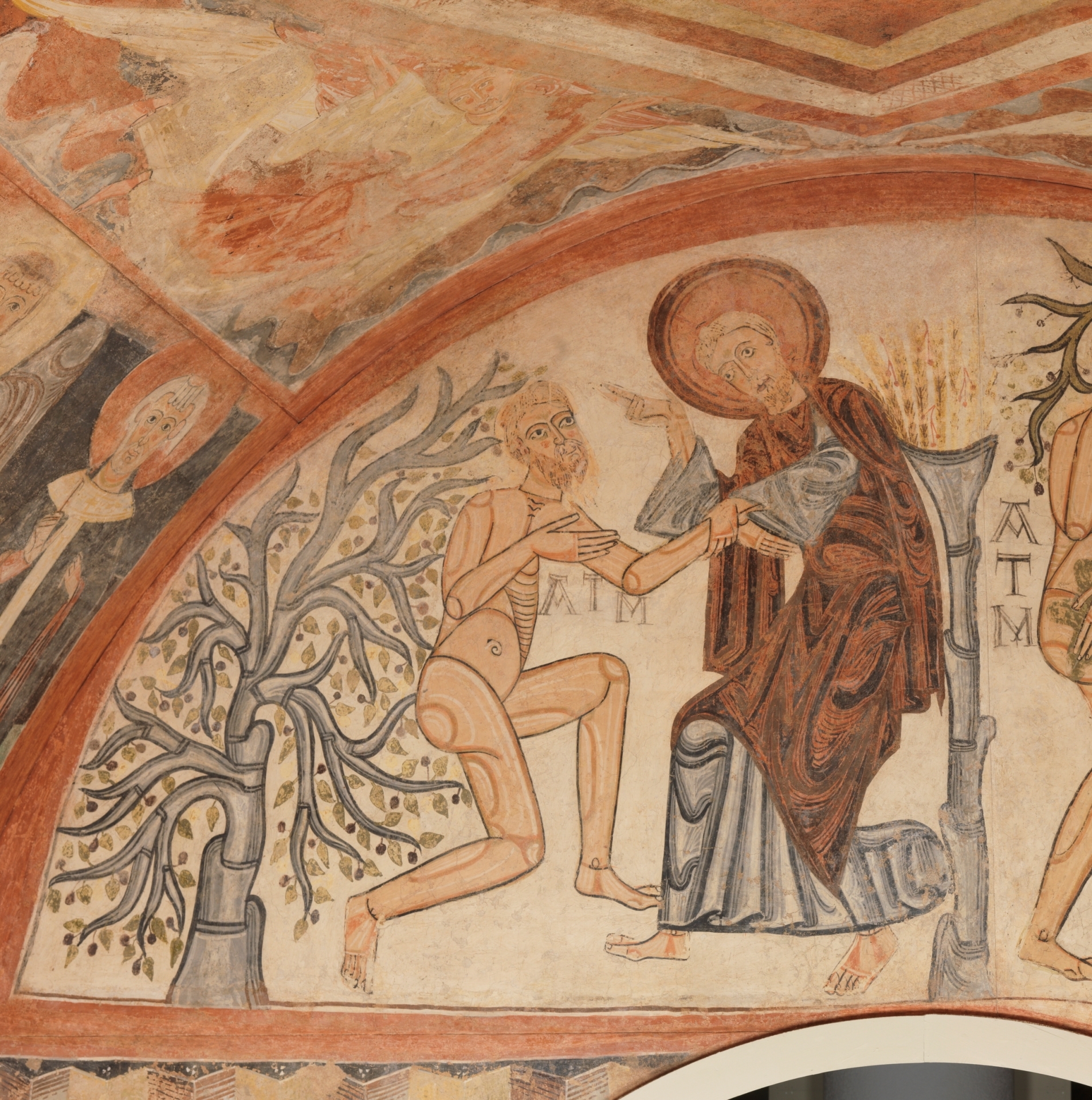$Museums
The Prado, Madrid, Spain
- Street: Paseo del Prado, s/n,
- City: Madrid,
- Country: Spain
- Zip/Postal Code: 28014
- Listed: June 26, 2017 12:42 am
- Expires: This ad has expired
Description

The Prado Museum (Spanish pronunciation: [muˈseo ðel ˈpɾaðo]) is the main Spanish national art museum, located in central Madrid. It features one of the world’s finest collections of European art, dating from the 12th century to the early 20th century, based on the former Spanish Royal Collection, and unquestionably the best single collection of Spanish art. Founded as a museum of paintings and sculpture in 1819, it also contains important collections of other types of works. El Prado is one of the most visited sites in the world, and it is considered one of the greatest art museums in the world. The numerous works by Francisco de Goya, the single most extensively represented artist, as well as by Hieronymus Bosch, El Greco, Peter Paul Rubens, Titian, and Diego Velázquez, are some of the highlights of the collection.
The collection currently comprises around 8,200 drawings, 7,600 paintings, 4,800 prints, and 1,000 sculptures, in addition to a large number of other works of art and historic documents. As of 2012, the museum displayed about 1,300 works in the main buildings, while around 3,100 works were on temporary loan to various museums and official institutions. The remainder were in storage.The museum received 2.8 million visitors in 2012.It is one of the largest museums in Spain.
 The building that today houses the Museo Nacional del Prado was designed by architect Juan de Villanueva in 1785. It was constructed to house the Natural History Cabinet, by orders of King Charles III. However, the building’s final purpose – as the new Royal Museum of Paintings and Sculptures – was the decision of the monarch’s grandson, King Ferdinand VII, encouraged by his wife Queen Maria Isabel de Braganza.The Royal Museum, soon quickly renamed the National Museum of Paintings and Sculptures and subsequently the Museo Nacional del Prado, opened to the public for the first time in November 1819.
The building that today houses the Museo Nacional del Prado was designed by architect Juan de Villanueva in 1785. It was constructed to house the Natural History Cabinet, by orders of King Charles III. However, the building’s final purpose – as the new Royal Museum of Paintings and Sculptures – was the decision of the monarch’s grandson, King Ferdinand VII, encouraged by his wife Queen Maria Isabel de Braganza.The Royal Museum, soon quickly renamed the National Museum of Paintings and Sculptures and subsequently the Museo Nacional del Prado, opened to the public for the first time in November 1819. The mural paintings from the Hermitage of the Vera Cruz de Maderuelo were transferred to canvas in 1947 and reconstructed at the Prado Museum in a layout as faithful to the original as possible. The walls of the chapel are decorated with figures of angels, Apostles and evangelical scenes, and the front bears two biblical themes.
The mural paintings from the Hermitage of the Vera Cruz de Maderuelo were transferred to canvas in 1947 and reconstructed at the Prado Museum in a layout as faithful to the original as possible. The walls of the chapel are decorated with figures of angels, Apostles and evangelical scenes, and the front bears two biblical themes. The Descent from the Cross was painted for the Chapel of Our Lady Outside the Walls at Leuven, which was founded in the fourteenth century by the Great Crossbowmen`s Guild, sold in 1798 and demolished soon afterwards. The two small crossbows that hang from the tracery in the corners of the panel indicate that it was commissioned by that guild. The earliest datable copy, the Edelheere Triptych of 1443 (Leuven, Saint Peter`s Church), shows that the Descent was completed before that date. Acquired from the Chapel by Mary of Hungary (1505-1558), it was displayed in 1549 in the chapel of her castle at Binche. Mary`s nephew Philip II of Spain placed it before 1564 in the chapel of his palace at El Pardo outside Madrid. Taken to the Escorial in 1566, it remained there until 1939, when it was transferred to the Prado. The shape of the Descent is that commonly used in Brabant for the centrepieces of large winged altarpieces.
The Descent from the Cross was painted for the Chapel of Our Lady Outside the Walls at Leuven, which was founded in the fourteenth century by the Great Crossbowmen`s Guild, sold in 1798 and demolished soon afterwards. The two small crossbows that hang from the tracery in the corners of the panel indicate that it was commissioned by that guild. The earliest datable copy, the Edelheere Triptych of 1443 (Leuven, Saint Peter`s Church), shows that the Descent was completed before that date. Acquired from the Chapel by Mary of Hungary (1505-1558), it was displayed in 1549 in the chapel of her castle at Binche. Mary`s nephew Philip II of Spain placed it before 1564 in the chapel of his palace at El Pardo outside Madrid. Taken to the Escorial in 1566, it remained there until 1939, when it was transferred to the Prado. The shape of the Descent is that commonly used in Brabant for the centrepieces of large winged altarpieces. An oval platter made from a single piece of rock crystal with an adornment at the foot and another on the edge. The latter constitutes a wide molded band of matting with enameled-gold appliqués bearing a design of Cs and scrolls enameled in opaque white, green, sky blue and light green, and red and green over gold. Similar frames bear twelve lapis-lazuli cameos. The small adornment that forms the seating ring is enriched with a design that alternates twelve enameled S and twelve pearls. The 1746 inventory lists three of the latter as missing, but they have since been replaced. What have not been conserved, however, are the pearls or precious stones that once enriched each of the appliqués on the outer adornment. With its dimensions and craftwork, this piece is a marvel of technique. Its surface is ringed by a sequential story whose various narrative episodes are linked by a continuous landscape of trees and more distant landscape elements that are developed by expanding the scene towards the platter’s lip, as well as a composition whose empty spaces on one half are resolved with a pair of flying birds.
An oval platter made from a single piece of rock crystal with an adornment at the foot and another on the edge. The latter constitutes a wide molded band of matting with enameled-gold appliqués bearing a design of Cs and scrolls enameled in opaque white, green, sky blue and light green, and red and green over gold. Similar frames bear twelve lapis-lazuli cameos. The small adornment that forms the seating ring is enriched with a design that alternates twelve enameled S and twelve pearls. The 1746 inventory lists three of the latter as missing, but they have since been replaced. What have not been conserved, however, are the pearls or precious stones that once enriched each of the appliqués on the outer adornment. With its dimensions and craftwork, this piece is a marvel of technique. Its surface is ringed by a sequential story whose various narrative episodes are linked by a continuous landscape of trees and more distant landscape elements that are developed by expanding the scene towards the platter’s lip, as well as a composition whose empty spaces on one half are resolved with a pair of flying birds. This possible saltcellar follows models dating from the first half of the sixteenth century and is considered the most important piece in the group of works known as The Dauphin´s Treasure. It represents a mermaid with a headdress of enameled feathers. Her torso and arms are decorated with rubies and diamonds and her lower limbs are enameled in blue. She holds a sculpted agate vessel and rests on a pedestal of the same material, with enameled parts. Its form has been related to the works of the Italian, Benvenuto Cellini (1500-1570), especially his famous saltcellar at the Kunsthistorisches Museum of Vienna.
This possible saltcellar follows models dating from the first half of the sixteenth century and is considered the most important piece in the group of works known as The Dauphin´s Treasure. It represents a mermaid with a headdress of enameled feathers. Her torso and arms are decorated with rubies and diamonds and her lower limbs are enameled in blue. She holds a sculpted agate vessel and rests on a pedestal of the same material, with enameled parts. Its form has been related to the works of the Italian, Benvenuto Cellini (1500-1570), especially his famous saltcellar at the Kunsthistorisches Museum of Vienna. In the same year that he published the Apocalipsis cum figuris, Dürer painted himself as a gentleman, dressed in light toned clothes and looking his best. He wears an open black and white doublet with a striped cap in the same colours, an undershirt trimmed with gold and a silk cord of blue and white threads holding up a grey-brown cloak that falls over his right shoulder. Dürer has sheathed the hands that he uses to paint in grey kidskin gloves indicative of high rank with the aim of elevating his social status from that of craftsman to artist and of locating painting among the liberal arts, as in Italy.
In the same year that he published the Apocalipsis cum figuris, Dürer painted himself as a gentleman, dressed in light toned clothes and looking his best. He wears an open black and white doublet with a striped cap in the same colours, an undershirt trimmed with gold and a silk cord of blue and white threads holding up a grey-brown cloak that falls over his right shoulder. Dürer has sheathed the hands that he uses to paint in grey kidskin gloves indicative of high rank with the aim of elevating his social status from that of craftsman to artist and of locating painting among the liberal arts, as in Italy.
Visit the official website for complete details,The Prado, Madrid, Spainwww.museodelprado.es/
3752 total views, 1 today


